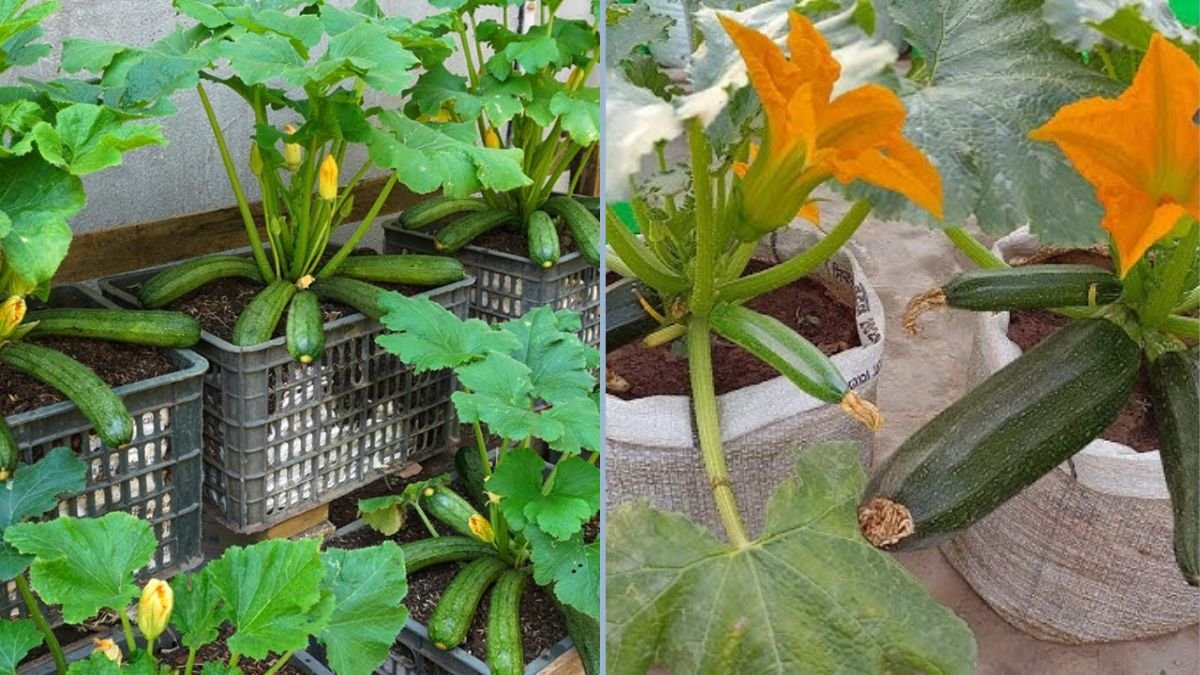Zucchini, also known as courgette, is a popular summer squash celebrated for its tender flesh, mild flavor, and versatility in the kitchen. From stir-fries and soups to grilled dishes and baked goods, zucchini is a favorite in many households. One of the best things about zucchini is how easy it is to grow at home, even for beginner gardeners.
Inspired by the YouTube video “Garden | Why is it so easy to grow zucchini? Discover how to grow zucchini at home,” this blog post will explore why zucchini is so beginner-friendly, provide step-by-step instructions for home cultivation, and share tips for a high-yield harvest. By the end, you’ll understand how to grow zucchini successfully and effortlessly in your own garden or containers.
Why Zucchini Is So Easy to Grow
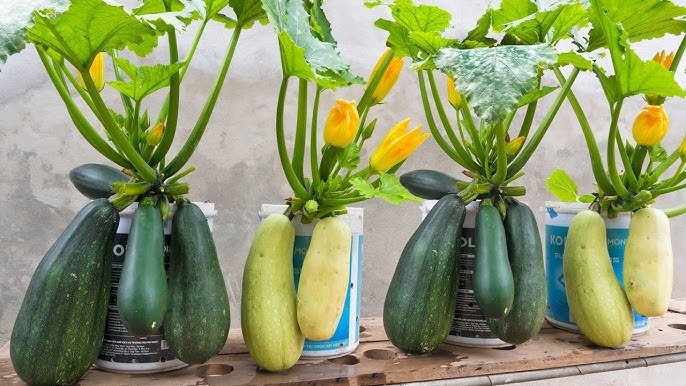
Zucchini stands out among vegetables because it is:
- Fast-growing: You can harvest your first zucchini in as little as 45–55 days from planting seeds.
- Low-maintenance: It requires minimal care, making it perfect for beginners.
- Adaptable: Grows well in both garden beds and containers.
- Resilient: Tolerates minor environmental fluctuations and is generally pest-resistant.
- High-yielding: One plant can produce multiple zucchinis throughout the season.
These characteristics make zucchini an ideal choice for home gardeners who want rewarding results without intensive labor.
Understanding Zucchini
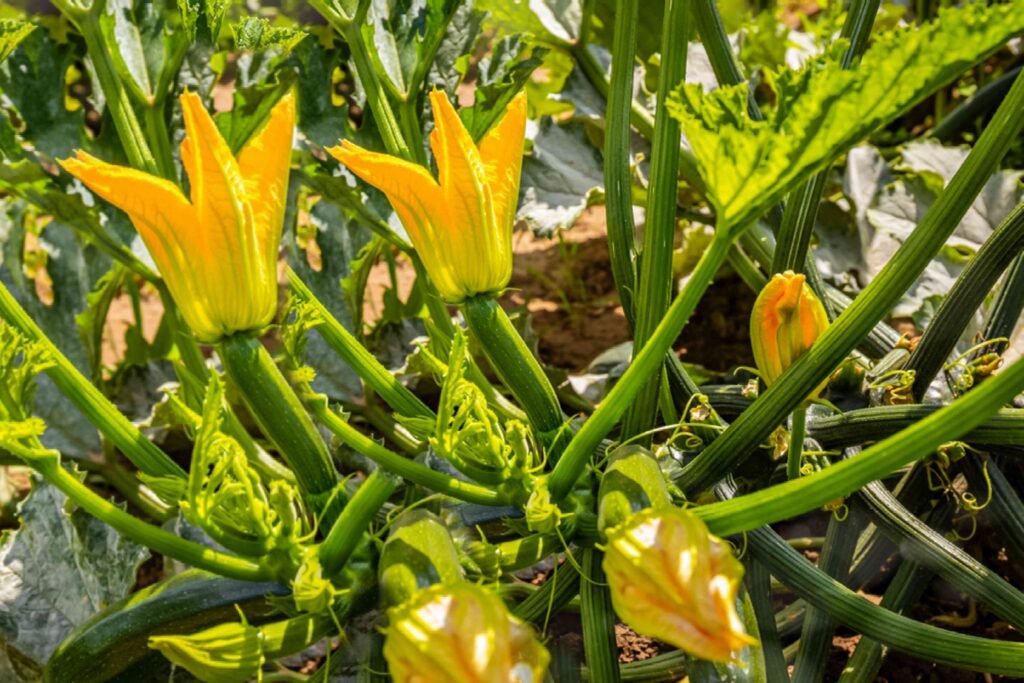
Zucchini is a summer squash that grows on bushy plants or trailing vines. Understanding its growth requirements will help ensure a healthy, productive harvest.
Key Features of Zucchini Plants:
- Leaves: Large, lobed leaves that provide shade to the soil and help retain moisture.
- Flowers: Produces yellow, edible flowers; both male and female flowers appear on the same plant.
- Fruits: Tender green or yellow squash, usually harvested when 6–8 inches long.
- Sunlight: Requires full sun (6–8 hours per day).
- Soil: Prefers well-draining, fertile soil rich in organic matter.
- Watering: Keep soil consistently moist for optimal growth.
Zucchini plants grow quickly and vigorously, making them easy for beginners to manage.
Materials You’ll Need
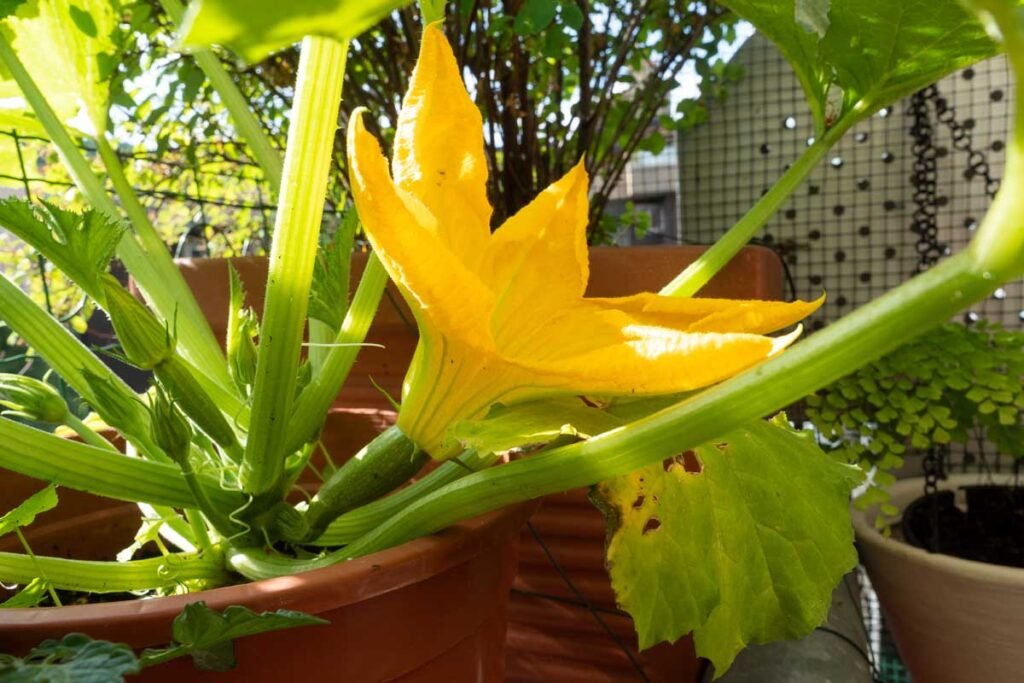
Whether planting in the garden or in containers, you’ll need the following:
- Zucchini seeds or seedlings — choose a variety suitable for your space.
- Soil or potting mix — nutrient-rich and well-draining.
- Containers (optional) — grow bags, pots, or any container with drainage holes.
- Compost or organic fertilizer — to enrich the soil.
- Trellis or support (optional) — for trailing varieties.
- Watering can or hose — for regular watering.
With these basic materials, zucchini can thrive even in small home gardens or balconies.
Step 1: Preparing the Soil
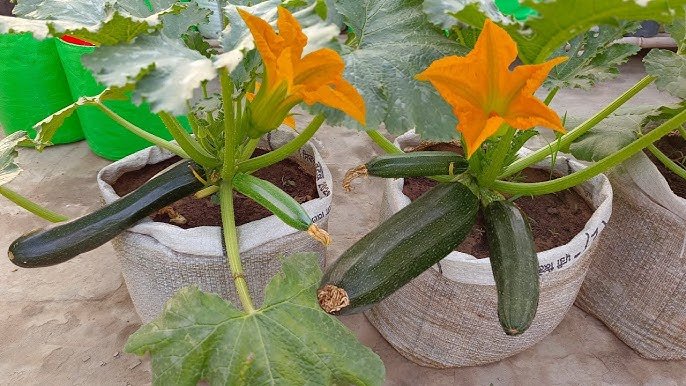
Zucchini grows best in soil that is rich in organic matter and well-draining.
- If planting in the garden, loosen the soil to a depth of 8–12 inches.
- Mix in compost, well-rotted manure, or organic fertilizer to improve fertility.
- For container gardening, fill pots with high-quality potting mix enriched with compost.
Healthy soil promotes strong root development and abundant fruiting.
Step 2: Sowing Seeds
Zucchini seeds are easy to germinate:
- Plant seeds directly in the garden or containers after the last frost date.
- Sow seeds ½ inch deep in small mounds or rows.
- Space seeds 18–24 inches apart for bush varieties; trailing types may need more room.
- Water gently after sowing.
Seeds usually germinate within 7–10 days, and seedlings grow rapidly under the right conditions.
Step 3: Providing Proper Sunlight
Zucchini is a sun-loving plant:
- Place garden beds or containers in a location receiving 6–8 hours of sunlight daily.
- For indoor or balcony gardening, rotate containers regularly to ensure even sunlight exposure.
Adequate sunlight encourages healthy leaves, strong stems, and higher fruit production.
Step 4: Watering Zucchini
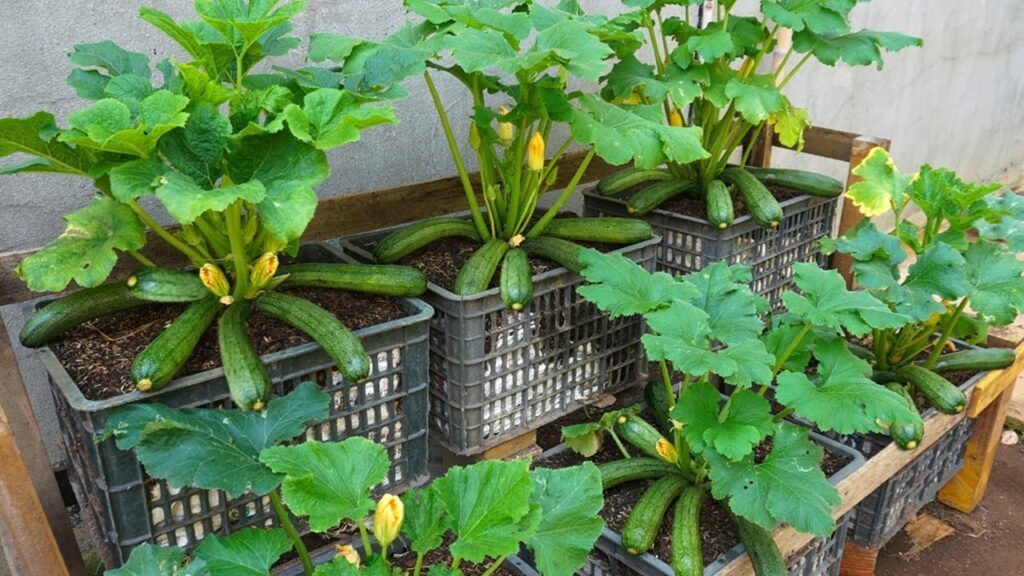
Proper watering is crucial for zucchini growth:
- Water consistently to keep the soil evenly moist but not soggy.
- Avoid overhead watering to reduce the risk of leaf diseases; water at the base of the plant.
- Mulching around the plant helps retain soil moisture and suppress weeds.
Consistent watering ensures rapid growth and tender fruits.
Step 5: Fertilizing for High Yield
Zucchini is a heavy feeder, so regular nutrition is essential:
- Apply compost or well-rotted manure when planting.
- Feed plants every 3–4 weeks with organic fertilizer or liquid compost.
- Avoid over-fertilizing with nitrogen, which encourages leaf growth at the expense of fruit.
Balanced fertilization promotes healthy vines and abundant zucchini production.
Step 6: Pollination
Zucchini plants have male and female flowers that need pollination for fruit formation:
- Outdoor plants are naturally pollinated by bees and insects.
- For indoor gardens or enclosed spaces, hand-pollinate by transferring pollen from male to female flowers using a small brush.
Proper pollination ensures more fruits per plant and prevents wasted flowers.
Step 7: Pruning and Maintenance
While zucchini is low-maintenance, minor care can increase yield:
- Remove yellowing or damaged leaves to improve airflow.
- Pinch lateral shoots sparingly if plants become too bushy.
- Monitor for pests like aphids, squash bugs, or powdery mildew and address them promptly.
Regular maintenance keeps the plant healthy and productive throughout the season.
Step 8: Harvesting Zucchini
- Harvest young, tender zucchinis when 6–8 inches long for the best taste.
- Pick frequently to encourage new fruit production; leaving fruits too long slows the plant.
- Zucchinis can grow very quickly, sometimes in just a few days, so check plants regularly.
Frequent harvesting maximizes fruit yield and quality.
Tips for Maximum Yield
- Plant in fertile, well-draining soil enriched with organic matter.
- Water consistently to maintain moist soil.
- Provide full sunlight for strong growth and fruiting.
- Support trailing varieties with trellises to save space and improve airflow.
- Hand-pollinate flowers if natural pollinators are scarce.
- Harvest frequently to encourage continuous fruit production.
By following these simple tips, even beginner gardeners can enjoy a bountiful zucchini harvest.
Common Problems and Solutions
| Problem | Cause | Solution |
|---|---|---|
| Yellow leaves | Overwatering, nutrient deficiency | Adjust watering, add compost/fertilizer |
| Poor fruit set | Lack of pollination | Hand-pollinate flowers or attract bees |
| Powdery mildew | High humidity, poor airflow | Remove affected leaves, increase spacing, improve airflow |
| Pests | Aphids, squash bugs | Use neem oil or organic pest control |
Most problems are minor and easily managed with basic care and attention.
Culinary Uses of Zucchini
Zucchini is incredibly versatile in the kitchen:
- Stir-fries: Sauté with garlic, onions, and other vegetables.
- Grilled or roasted: Toss with olive oil and herbs for a healthy side dish.
- Soups and stews: Adds flavor and texture to broths.
- Baked goods: Zucchini bread, muffins, or cakes.
- Stuffed dishes: Hollowed zucchinis can be filled with grains, meats, or cheese.
Homegrown zucchini is tender, fresh, and flavorful, elevating any recipe.
Environmental Benefits
Growing zucchini at home promotes sustainable gardening:
- Reduces dependency on store-bought vegetables, lowering food miles.
- Encourages organic gardening without chemical pesticides.
- Can be grown in small spaces, promoting urban and balcony gardening.
- Provides fresh, nutritious vegetables while reducing packaging waste.
Zucchini is both rewarding to grow and environmentally friendly, making it perfect for home gardens.
Final Thoughts
Zucchini is one of the easiest vegetables to grow at home, offering rapid growth, high yield, and minimal maintenance. With the right soil, sunlight, water, and a little care, even beginner gardeners can enjoy:
- Fresh, tender zucchini for daily meals
- Multiple fruits per plant throughout the growing season
- Simple, eco-friendly gardening that fits small spaces
This method is perfect for:
- Beginners who want a low-maintenance vegetable garden
- Urban gardeners with limited outdoor space
- Families seeking fresh, organic vegetables at home
- Anyone interested in productive and rewarding gardening projects
Start planting zucchini today and discover just how easy it is to grow your own delicious vegetables at home!
